Genuine luxury watches are hard to tell these days. Many watch brands also try to pass themselves as one without actually ‘putting in the work.’ What makes a watch a luxury watch?
Luxury watches differ from regular watches in terms of their quality, workmanship, and materials. Almost all luxury watches are hand-assembled and carry a brand image of exclusivity and class. It also has a price tag that is less accessible to many.

Aside from the above, there are more characteristics of luxury watches that set them apart from common watch brands, which we will look at below individually.
The goal here is to help you compare a watch you encounter in the future to the list here. Hopefully, it will help you to quickly decide for yourself if the watch is actually a luxury watch or not.
We have also use the list we created here to review several watch brands, so feel free to check those out as well:
ALSO READ: Is Tissot A Luxury Watch Brand?
ALSO READ: Is Movado Considered Luxury Brand?
Luxury Is Subjective
Before we talk about luxury watches, do understand that the word ‘luxury’ can be different for different people.
For example, a $1,000 watch can be an essential daily office watch. However, to some, that is a luxurious timepiece that they will gladly wear to their most important event in life – graduation, getting married, etc.
To some, they would not even bat an eyelid at a non-Swiss watch, no matter how beautiful and well built it is. Some see true luxury as owning watches that people cannot buy even with money, as it is so exclusive you need to wait for years to own one.
Some people think Rolex, Omega, or Cartier are way overrated and are advertised everywhere, everybody knows about it.
They see a true luxury watch as watches that spread in popularity after being seen on the wrists of influential and successful people. These watches often do not need to be advertised through ‘in-your-face’ type of ads.
Therefore, it is customary to see different answers from different people when deciding whether a watch is a luxury watch. In fact, as your tastes evolve, you may think of a luxurious watch you currently own as just an ordinary piece.
So make your own decision, purchase what you want, and enjoy your watch.
Luxury Watch Characteristics
The list here indicated the characteristics that made a luxury watch different from a regular watch. The goal here is to help you compare a watch brand you encounter in the future to the list here. You can then quickly decide if the watch brand is actually a luxury or not.
History
This might not be 100% applicable, but luxury watch brands often have a long history of producing fine watches with excellent performance.
Rolex was founded in 1905, Omega in 1875, and Longines was founded as early as 1832.
The idea with historical luxury watch brands is to look at their history and see how they have managed to keep their standard or production high for so long.
Some even managed to push the standard of horology higher over time by achieving feats that set them apart from other watchmakers. For example, by taking their watch to the highest of mountains (Rolex Oyster Perpetual) or the deepest of oceans (Omega Seamaster Planet Ocean Deep Dive).
However, it is essential to note here that there are luxury watches that do not have a long history, such as Richard Mille. It was founded as recently as 1974.
Movement
In general, luxury watch brands use their own in-house caliber/movement to showcase quality and attention to detail.
These movements are developed in-house and are usually not sold to other companies. If you are keen to own that movement, you will need to purchase the watch from the company.
For example, Rolex’s movements, such as the 3135 or the 4030 chronograph are only for their watches. To own it, you must purchase a Rolex.
These movements are also put to stringent tests to ensure reliability and performance whenever possible.
ISO certifications are common, with some also passing tests from timekeeping bodies such as the COSC (Contrôle Officiel Suisse des Chronomètres – The Official Swiss Chronometer Testing Institute).
This generates a sense of high quality, which is also a substantial part of a luxury watch brand.
Materials
Luxury watches also use materials that feel luxurious – precious metals or gemstones are common on watch cases and bracelets.
Most watches use 316L stainless steel, which is often called ‘surgical or food-grade steel’ as it has strong anti-corrosion ability. Luxury watchmakers sometimes use even higher quality steel, such as 904L. Rolex’s own Oystersteel blend of steel is part of the 904L family.
Some of these steel casings are given gold, rose gold plating for more sense of luxury.
Going up from steel, luxury watchmakers explore materials such as titanium. Grand Seiko luxury watches are known for their extensive use of titanium for the extra hardness, which means less scratches and nicks overall. Titanium is also light and less heavy on the wrist.
Some luxury timepieces may use 14k gold cases, where pure gold is mixed with other metals for hardness. Pure gold (24k) is too soft to be used as a watch case.
To top this off, watchmakers will add gemstones on the dial and bezels to further increase the luxury feel of the watch. Some examples of watches with gemstones include those from Cartier, Jaeger-LeCoultre, or Rolex Datejusts. Customers can order these as optional additions to their watch in many cases.
Luxury watches also almost exclusively use sapphire crystal, compared to mineral of acrylic. It is also possible to see the leather straps made of high quality top-grain leather.
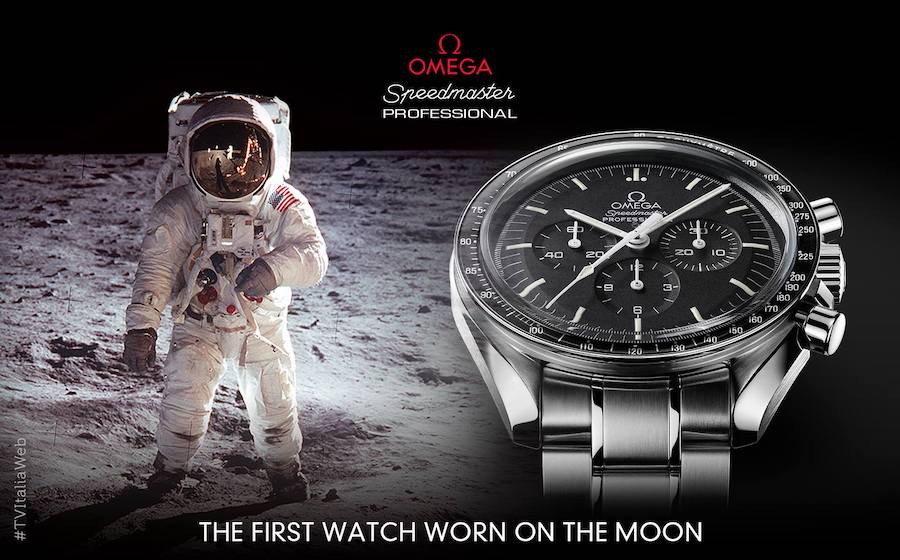
Performance
Luxury watches are very precise in their engineering and production, often passing many tests and certifications to indicate their performance, precision and robustness.
This is why you see many luxury watchmakers take pride in their watches being used in extreme environments, to the point of using these achievements in their marketing.
Omega likes to promote their Speedmasters by saying that the watch is so good it passes NASA’s test and can handle the harsh environment of the moon.
Omega also recently took their Seamaster Planet Ocean Deep Dive 10,928M (35,853ft) into the sea for two days breaking the world record previously held by Rolex. It achieved the feat and only lost a single second in time accuracy.
Rolex loves to promote how their Oyster Perpetual watch went up Everest together with Sir Edmund Hillary and Tenzing Norgay in 1953.
Aside from that, many of these watches also passed certifications from timekeeping bodies such as the COSC. ISO certifications are also quite common.
Technology Advancement
Luxury watches also are known to push the standard of the watch industry forward by introducing new technology or production methods.
As a result, they can improve their watch performance to the point of achieving incredible feats in history.
Grand Seiko watches, for example, pioneered the technology of the Spring Drive movement – a hybrid between quartz and automatic movement. Rolex created their Oystersteel blend of steel to produce excellent hardness, unique shine, and corrosion protection.
There are plenty more on these, but a luxury watch brand usually would have contributed to the technology of timekeeping in some ways.
However, it could be said that luxury watches do not monopolize this front. Many affordable watch brands have introduced watch technology that was much more influential. For example Seiko released the first quartz watch in 1969.
Design Standard & Trends
Luxury watches also have models that ‘set’ the design standards for a particular watch type. Much like how some car manufacturers benchmark their new sedan design to the BMW 5 series, many watchmakers will also design watches by benchmarking on iconic models.
Rolex submariner or the Omega Seamaster Planet Ocean comes to mind for dive watches. For dress watches, often the Patek Philippe Calatrava, Jaeger-LeCoultre Master Ultra-Thin, or the Rolex Cellini set the standard.
When these luxury watchmakers release a new design, many other watchmakers will follow suit and release something similar.
For example, when Rolex introduced the Pearlmaster bracelet design in 1992, many other watches also started to offer something similar.
Hand Assembly
Machining and production of parts will require machinery. However, almost all luxury watches are hand-assembled to ensure the highest watch quality.
Some luxury watchmakers pride themselves on producing and assembling the watches in Switzerland. You can confirm this when you see the sentence ‘Swiss Made’ on the watch, usually on the dial or the caseback.
To claim the watch to be ‘Swiss-Made,’ 50% or more of the watch’s value needs to come from Switzerland.
Hand assembling watches also removes the potential for mass production. These watchmakers can only produce a limited amount of watches per year.
As a result, some luxury watches have queues to purchase them. Some buyers become impatient and purchased used ones instead, which drives up the price of the secondary market for that watch.
This further increases the exclusivity of the watch brand, further cementing its position as a luxury watch brand.
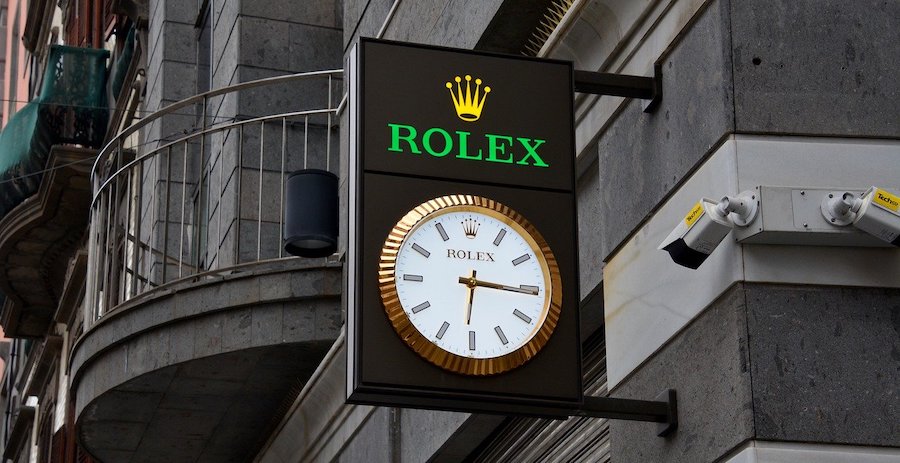
Brand Image
Luxury watch brands also carry a certain image that sets them apart from premium or budget-level watch brands.
First is exclusivity. Luxury watch brands often like to show that they are on the wrists of famous, influential people. Golfers, tennis players, basketball athletes, and artists are often sponsored to wear their luxury watches.
Of course, not all of them are sponsored. Many also purchased luxury watches themselves as they appreciate the watch quality.
Luxury watch brands also love to associate themselves with events or communities that project a sense of power, prestige, or success. You might remember seeing Rolex billboards on tennis and golf tournaments.
Just flip through pages of the Wall Street Journal or other financial publications. You might see ads from companies such as Omega, Longines, or Cartier. Their ads also can appear on brochures of important business events.
Some luxury watch companies rarely engage in advertising. They go strictly by word of mouth to generate exclusivity and mystery. The ‘Holy Trinity’ watches are rarely seen on advertisement boards. Holy Trinity watches refer to Patek Philippe, Audemars Piguet, and Vacheron Constantin.
Overall, luxury watch brands carry a brand image of exclusivity, class, refined taste, and prestige.
Price
To finalize luxury watches, they place a higher barrier of entry to keep themselves exclusive and prestigious.
Entry-level luxury watches start off around four figures in price tag, with prices going quickly into five and six figures for more exclusive brands.
| Watch Brand | Used Price Range |
| Patek Philippe | $8,800 – $478,087 |
| Rolex | $1,783 – $211,500 |
| Omega | $156 – $50,660 |
| Seiko | $44 – $5,801 |
| Citizen | $69 – $2,209 |
| Tissot | $137 – $1,726 |
| Bulova | $51 – $740 |
ALSO READ: Is Tissot A Luxury Watch Brand?
It is also common to see luxury watches being auctioned and sold at seven or eight figures. The Rolex Daytona worn by actor Paul Newman was auctioned and sold for 17.8 million.
Prices are kept high to ensure enough profit margins to pay for all the marketing campaigns to keep the brand image. They also invest in the development and design of new caliber and movements.
Homages
Luxury watch brands also tend to have homage watches made after their models.
Homage watches refer to watches made by another company with a similar look and feel to the original, but do not pretend to be the original.
For example, a Tisell 9015 is an excellent homage to the Rolex Explorer.
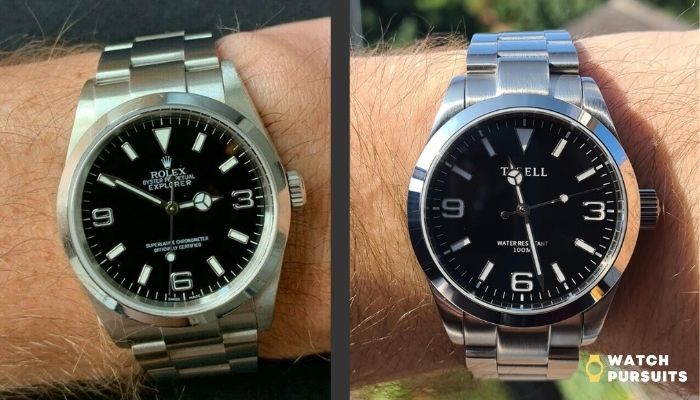
Homages exist to capitalize on the success of these luxury watch brands. Their watches were in demand but were hard to get because they were too expensive. The watchmaker also could not produce enough of it to sell.
Homages are often very affordable, with prices rarely crossing into the four-figure range. It also carries the look of the original watch, but with changes here and there.
The watch will also carry the mark of the homage makers, not the original watch. This protects them from copyright or patent infringement.
ALSO READ: What Are Homage Watches?
Are Luxury Watches Worth It?
Luxury watches are worth it in many ways. Not just from price appreciation but also from the satisfaction of owning one. Owning a luxury watch can also open doors and help you build lasting connections to propel your life forward.
Monetarily, luxury watches tend to appreciate over time, although this could not be applied to all.
Nothing beats the initial feeling of success, satisfaction, and joy when you pick up a luxury watch. You walk into the boutique, get treated with the utmost respect by the salespeople, and as they walk to you with your watch encased in your box, your heart beats in excitement.
The box opens, and the salesperson helps put your watch on your wrist for the first time. The watch shines under the lighting, the glimmer of luxury and class.
You see the signature logo and signature on the dial. You smile and are amazed at how such a great timepiece is on your wrist. Your grail, dream watch, is finally united with you.
This is the feeling a luxury watch can give you, and this alone makes them worth it.
Of course, wearing the right luxury watch to the right places can open you up to opportunities.
Luxury watches tend to attract people together. It is often one of the first places to tell a person’s ‘position’ in life. A poor guy working minimal hourly wages is not likely to sport a Breitling compared to an upcoming hotshot lawyer.
Successful people like to network and connect with successful people as well. When you attend social events with a beautiful luxury watch on your wrist, you are likely to connect with people who could help you succeed in life.
Cruel, but that’s how it is.
Do Luxury Watches Appreciate?
Luxury watches appreciate, albeit at a different pace, depending on the supply and demand. Often they depreciate for the first few years, and once they bottom out in price, they will go up, like cars. The condition of the watch will also determine how well it will appreciate.
The critical difference that determines the appreciation level of a luxury watch is if you picked the right watch to own. Some luxury watch brands or models appreciate much faster than others.
Price appreciation is determined by the supply and demand forces. For watch price to appreciate, there must be more demand than supply.
Often as watches age, they are no longer made by the watchmaker. As a result, the supply stopped, and there’s now a limited amount of watches on the market.
At this point, attrition sets in. Watches break down, get destroyed in accidents, or some were cannibalized for parts. This further reduces supply.
It is often at this point that price depreciation stops. As people start noticing it, they search for the watch model to hold on to it for a bit and resell them at a higher price in the future.
The demand starts to snowball, and as more and more people search for the watch, prices go up.
Some brands are more recognizable, followed and purchasable by many. So these watches appreciate faster than lesser-known brands. So many purchase a Rolex because it tends to do well at the resale price.
However, non-luxury watches such as Seiko have shown history of appreciating in price.
Now, suppose you are keen to explore luxury watches in more detail but do not see much sense in splashing too much cash.
We would like to showcase several luxury watch brands that we consider entry-level and affordable to many.
What Are The Best Affordable Luxury Watch Models?
The best affordable luxury watch models are Omega Seamaster, Grand Seiko, and Rolex Oyster Perpetual. They are popular, have a large market, and should hold value well.
We know that the term ‘affordable luxury’ watches are so subjective that it is almost impossible to satisfy everyone.
This goes back to the same problem that a $1,000 watch can be seen as super expensive, and it can also be seen as a ‘piece of cake.’
So we decided to set a price ceiling of $5,000 and try to find watch models from luxury watchmakers that are iconic and likely to appreciate in price in the future.
We will also focus on the used watch market to leverage these watch experiences’ massive depreciation in the first few years. Great bargains can be found in older watches.
However, do factor in additional costs for you once you purchase these models. They might need service and some restoration work done to it.
Rolex Oyster Perpetual
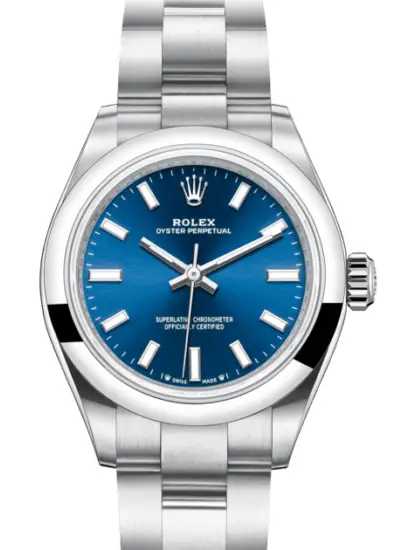
Rolex Oyster Perpetual is probably one of Rolex’s entry-level watches, their most affordable model. As a result, these watches were bought and sold by many. This also kept the watch high profile and known to many people.
These factors made this watch a great entry point for luxury watch starters. It is also not too much of a stretch in pricing. For example, you can get a vintage Oyster Perpetual at a decent condition from $2,000.
These watches would have bottomed out in price and should appreciate in the future, provided you take good care of it.
Omega Seamaster
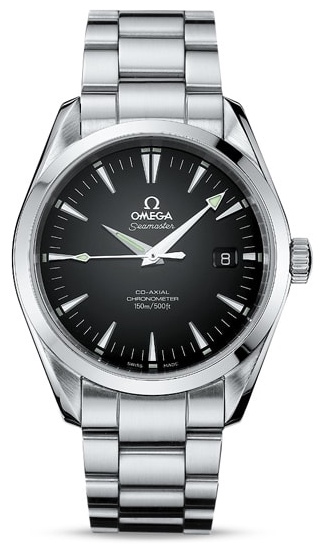
Any Tom, Dick, and Harry can name Rolex as a luxury watch, with Omega coming second. That is how you tell how famous Omega is, perhaps second only behind Rolex.
Among Omega’s famous watches, their line of Seamaster watches are popular and probably most bought, sold, and hunted down by many.
For example, this particular Omega Seamaster with the reference 2503.50 starts at $2,070. That’s a very attractive price for a piece of well-depreciated luxury that is likely to appreciate in the future.
Grand Seiko
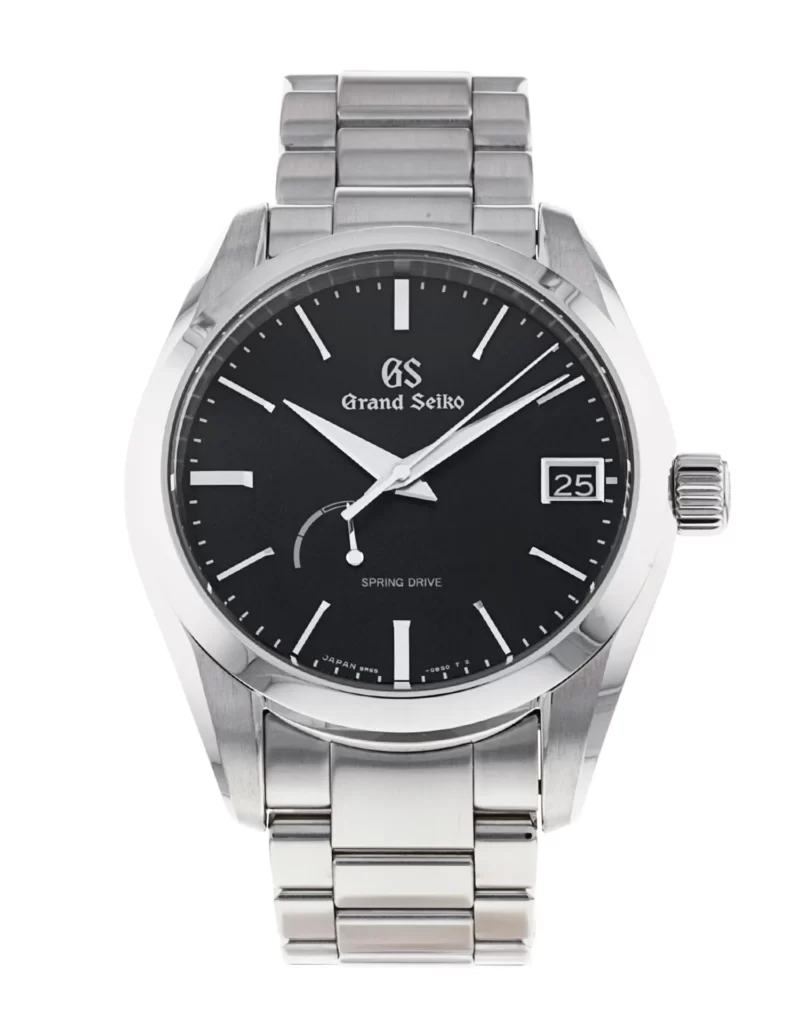
By purchasing a Grand Seiko, you will have the epitome of Japanese watchmaking in your hands. It is not far-fetched to claim that a Grand Seiko contains the best of technology, construction, engineering, and materials for watches from the land of the rising sun.
It is also rising in popularity recently, as more and more watch enthusiasts recognize how much value for money they are getting from a Grand Seiko. In particular, the markets are high for the Grand Seiko ‘Snowflake’ (SBGA211).
Prices have gone up as demands outstripped supply. A used snowflake of around 5 years is selling at around $5,000. Compare that with the same model’s MSRP if you purchase brand new – $5,800++.
If the Snowflake is too expensive, other references to Grand Seiko are affordable, well under $5,000. For example, this SBGA285 reference is available for around $2,850.

